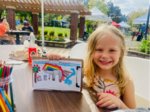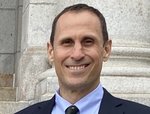

It's time to start healing. But how do we create a healing community when people are hurting?
"A traumatized gang member is more likely to cause trauma. A cherished person is going to find the way to cherishing themselves and others," says Father Greg Boyle, the founder of Homeboy Industries in Los Angeles. "The culture is the number one thing. We do all the other things, like job training, but they’re secondary to a culture that heals.”
Homeboy Industries is the largest gang rehabilitation and reentry program in the world. It began in 1988 as a job training program called Jobs for a Future. Father Greg, or Father G as he is known, created the program as an alternative to gang life for at-risk youth after becoming the priest at Dolores Mission Parish in Boyle Heights in East Los Angeles. The church sits between two housing projects, and when Boyle arrived in 1986, there were eight gangs at war with each other, and the area had "the highest concentration of gang violence in the world."
In those early days, Boyle, a Jesuit, helped homies get jobs. Their motto was "Nothing stops a bullet like a job." But he soon realized that jobs aren't enough. A healing-centered approach works better than a job-centered approach. He couldn't "save" young men and women trapped in gang life. They had to want to change themselves.
"I learned that saving lives is for the Coast Guard. Me wanting a gang member to have a different life would never be the same as that gang member wanting to have one. I discovered that you do not go to the margins to rescue anyone. But if we go there, everyone finds rescue."
Today, Homeboy Industries has an annual budget of $14.7 million and serves more than 9,000 community clients each year. The nonprofit organization offers a range of services, such as tattoo removal, workforce development, substance abuse treatment and mental healthcare. They provide a community of support with "those whose burdens are more than they can bear."
They also have 400 organizations from around the world that are part of the Global Homeboy Network. Their mission is to create therapeutic communities that offer job skills training, cost-free programs and services, and social enterprise employment.
The job isn't to fix people. It's to build kinship, accompany people, see them, listen to them, and point them in the right direction.
"Our choice always is the same: save the world or savor it. And I vote for savoring it," Boyle explains. "And, just because everything is about something else, if you savor the world, somehow — go figure — it’s getting saved."
We can learn a lot from Father Greg Boyle and Homeboy Industries. Here in Minnesota, there are many people and groups working to restore and heal communities. The Lowry Hill East Neighborhood Association (LHENA) and I are looking to bring some of them to Minneapolis this summer. We are organizing four monthly Twin Cities Community Pop-Up Markets with Bread, a unique incubator for retail businesses that focuses on communities of color. The markets will be at Mueller Park in the Lower Hill East neighborhood, or the Wedge, starting in June.
These outdoor pop-up markets will bring together local business vendors, restorative practice leaders, wellness practitioners, community organizations, food trucks, musicians, artists, and community members for a vibrant marketplace. The markets will be free, accessible to all, and designed to build local connections, boost the local economy and empower the community. They also will have a restorative focus with yoga, meditation, talking therapy, art and more.
LHENA is working with restorative practices organizations — including the Minnesota Peacebuilding Leadership Institute, Restorative Justice Community Action and ManUcan Consulting (Manu Lewis) — to create restorative communities. This work will equip residents and businesses with the tools to create strong communities that have the core values of open-mindedness (giving up fixed ideas), presence (meeting people where they are without judgment) and appropriate response (how can we best help and serve?). The goal is to create a restorative community framework that any community can use.
Bread and LHENA believe economic empowerment and opportunity, combined with restorative practices and action, can drive real social change and create communities that work for everyone. We have heard from many Minneapolis businesses, organizations and residents that are concerned about current trends in the city. People are wondering how we can revise civic policies to be more community-minded and restorative.
The markets can show how businesses, restorative practitioners and the community can work together to create restorative communities. After the summer restorative pop-up markets, the plan is to organize more restorative pop-up markets. They can be a stepping-stone toward creating restorative communities across the Twin Cities.
To be a vendor, sponsor or volunteer at this summer's Twin Cities Pop-Up Markets, let us know.
Eric Ortiz lives in the Wedge with his family. When he’s not community building, he’s the director of media for Granite Media and writes bilingual children’s books with his kids. Their first book, “How the Zookalex Saved the Village,” is available in English and Spanish.
Comments
No comments on this item Please log in to comment by clicking here